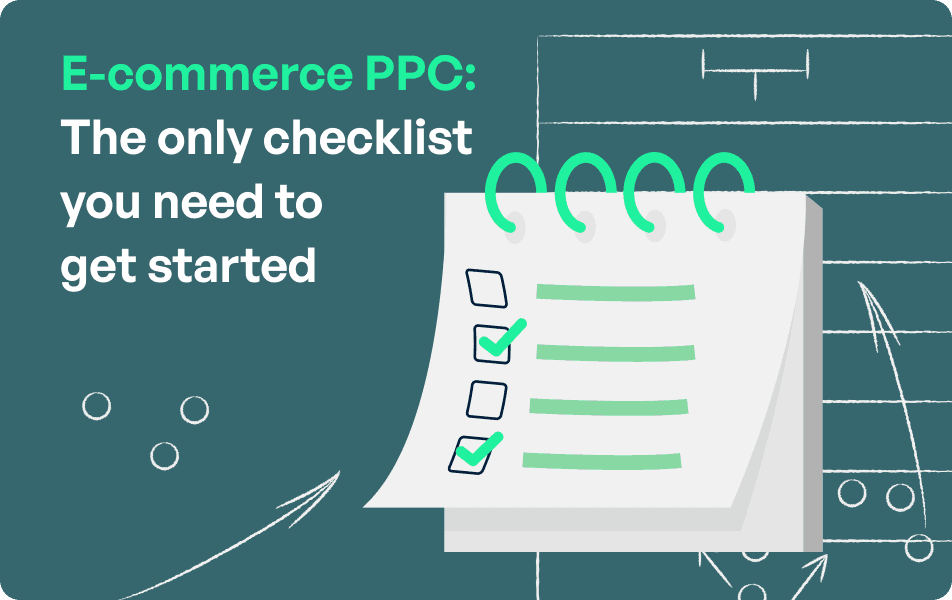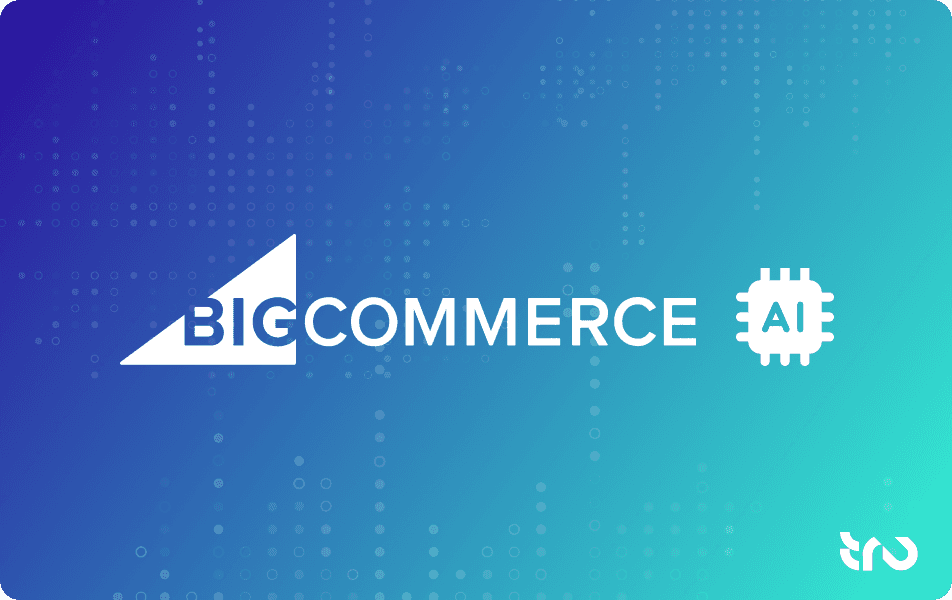You know the one short cut to success for retail businesses? It’s literally just one word, Data.
This is a data-driven digital age where data gets generated in large amounts daily, and if you master data, you master your business’s key to success.
Though data is important for all industries, but in retail, data analytics directly influences revenue growth. Want to know what impact can effective data attribution bring? Here’re the insights:
137% increase in revenue growth.
106% rise in conversion rates.
1400% increase in revenue from paid performance channels.
These are not just mere stats but a groundbreaking, well-researched study by Snowplow that showed how data-optimized customer journeys can impact business performance.
Everyday users come to e-commerce websites, scroll through the product descriptions, read reviews, may see ads online, and end up buying a product. At each step of this process, data is playing its role for the retail business. But how would the business know which step is working as the game changer for converting the customers? The answer is Data Attribution.
While data analytics is quite a dominating term these days, data attribution is another important aspect that can help industries boom, especially retail marketing.
So, in this blog we will walk through the benefits of data attribution in boosting retail sales. You will also get a brief on what data attribution is, its types, and its use cases by some large retail businesses.
What is Data Attribution?
Data attribution refers to tracking the user’s journey and all the touchpoints on a web page. This is done to determine which of the touchpoints lead to the action like purchase, or sign up.
Data attribution models use different parameters like first party cookies, UTM parameters, and tracking scripts to capture the session. This helps in analyzing the event data for improving the marketing actions, and enhancing the user experience.
Example of Data Attribution for Retail:
Imagine a person looking to buy shoes online. First, they click on a Google search ad to visit a brand’s website. Later, they see a social media ad and click on it to explore more. Finally, they receive an email offer with a discount and decide to make the purchase.
Considering the above example, data attribution for business would help analyze which touchpoint - google search ad, social media ad, or the email gets the most credit for the purchase. Thus, businesses can analyze the user journey, and identify most effective wayouts, and areas of improvements to boost their market strategies, and sales.
Data Attribution Helps You Identify:
Number and types of touchpoints involved.
All customer interactions with a particular touchpoint.
Time between two touchpoints.
Devices used.
Customer demographics (age, location, purchase history etc.)
By following the right marketing attribution strategies, retail businesses can dynamically maximize their sales. Check out Tru’s suite of marketing and data analytic services to have an idea of how we can help in this matter.
Types Of Data Attribution
Data attribution models have been broadly divided into two forms: Single touch attribution model and Multi-touch attribution model.
Single touch attribution model refers to determining which channels have the greatest impact on the user that lead to the conversion. On the other hand, the multi touch attribution model considers all the touchpoints that were involved in the user’s journey and action to give them the respective credit.
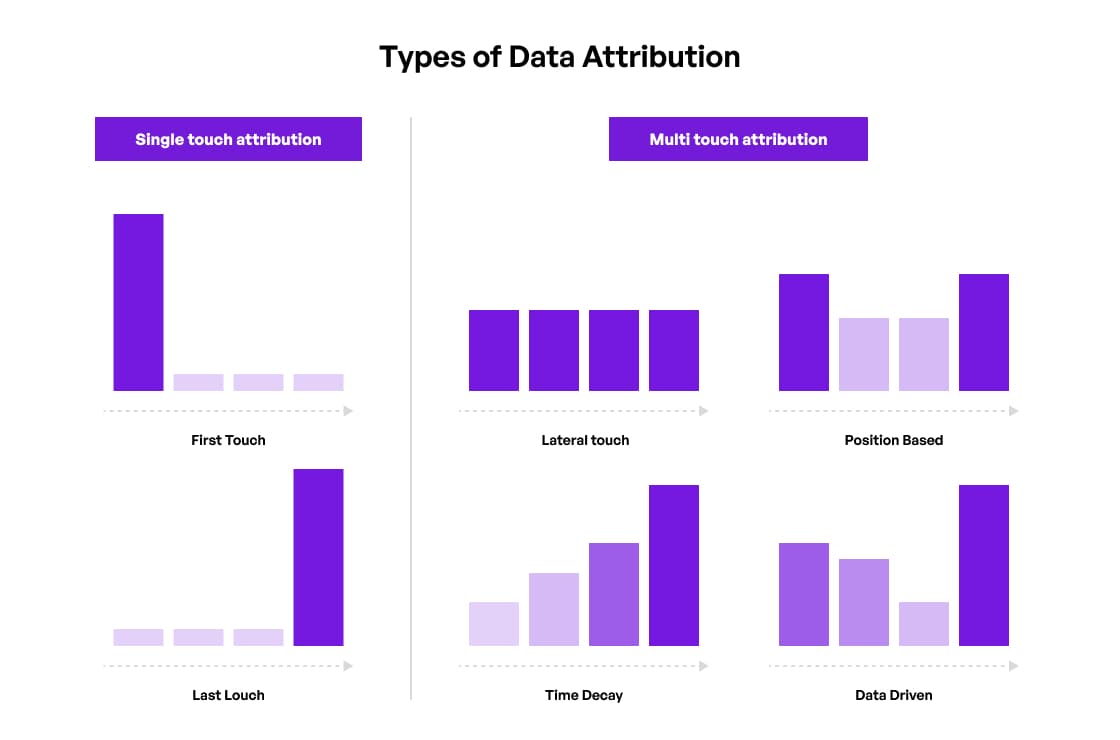
Where Single-touch attribution helps businesses identify the most impactful marketing efforts, multi-touch attribution tracks user actions across different touchpoints, providing detailed and accurate insights into how each interaction influences the customer journey.
Determining which type of data attribution model will best suit your business would be based on factors like your business model, goals, target audience, marketing channels, and campaigns that you run.
Single Touch Attribution
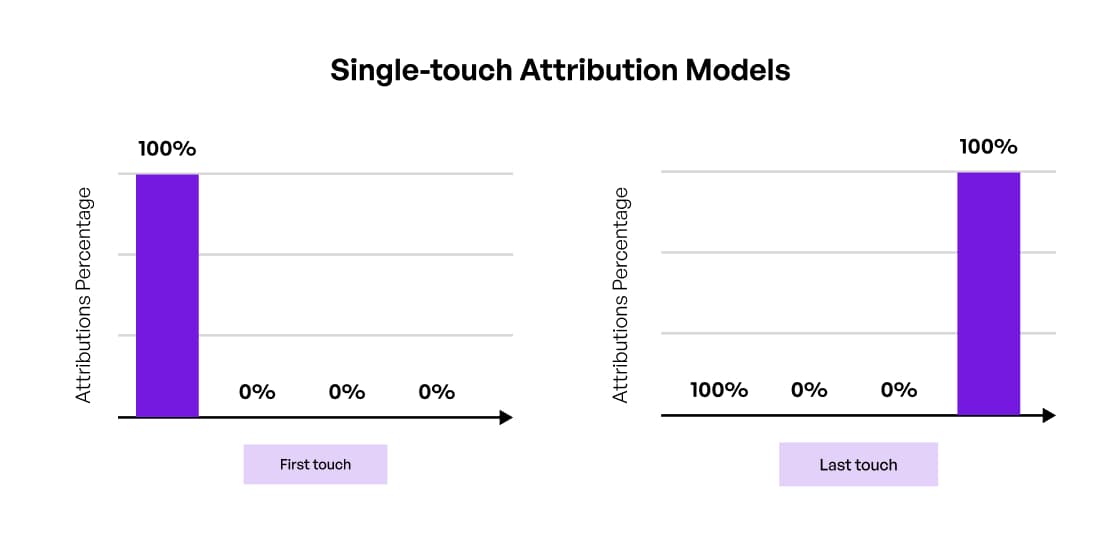
First Click/First Touch Attribution:
First click attribution gives full credit to the first touchpoint that introduced the customer to your brand. It's useful for understanding how customers discover your business.
Last Click Attribution:
Last click attributes all the credit to the final interaction before a purchase. This model is commonly used as it highlights what drove the final conversion.
Multi Touch Attribution
Linear Attribution:
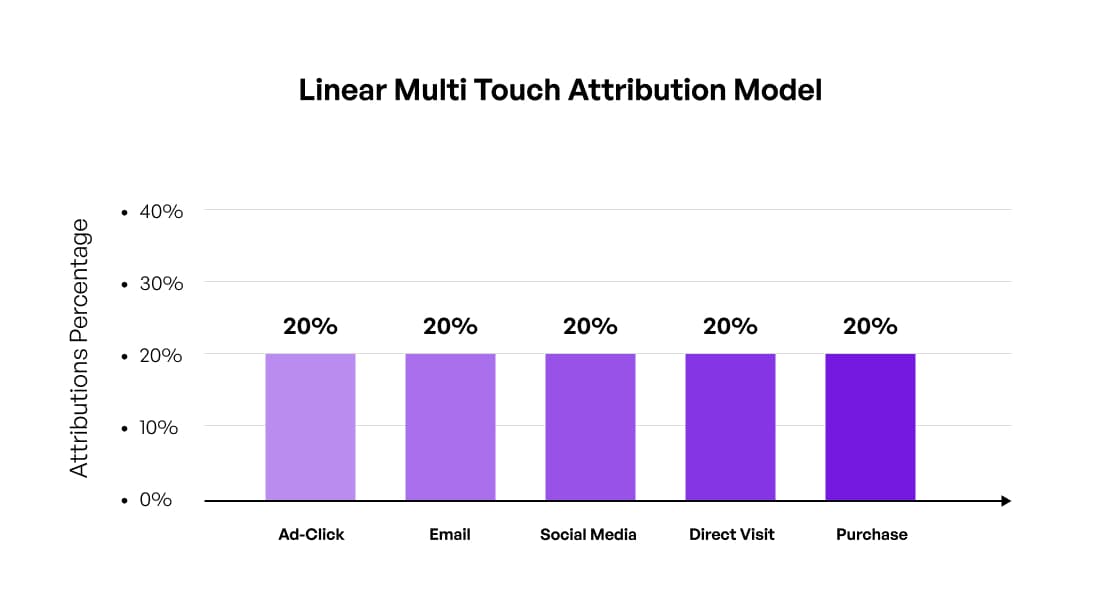
Linear attribution distributes credit equally across all touchpoints in the customer journey. It's beneficial when you want to give balanced importance to all interactions.
Data-Driven Attribution:
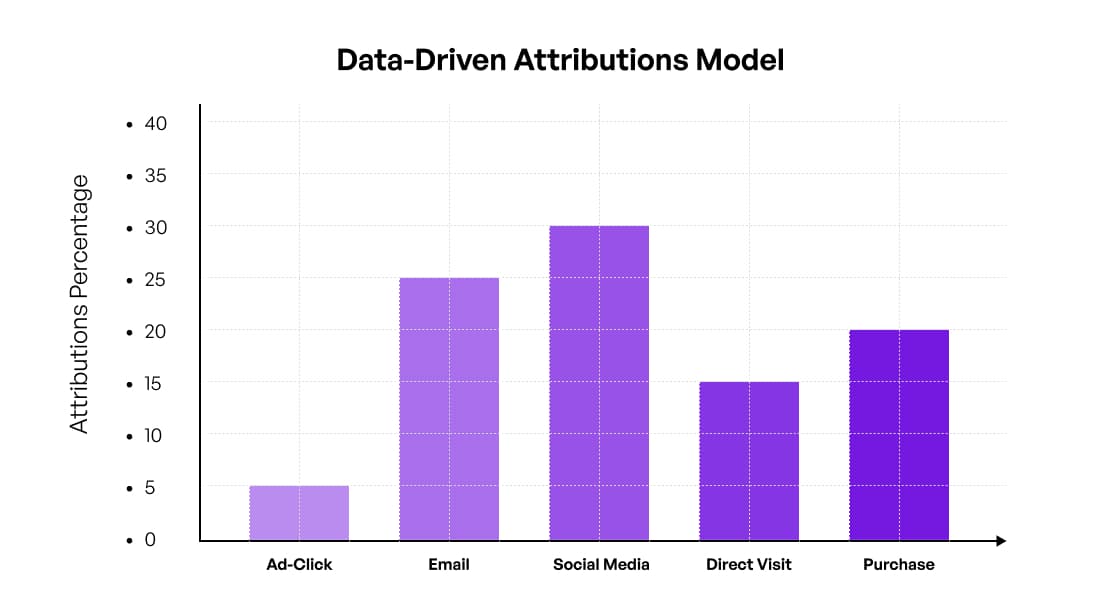
Data-driven attribution uses machine learning algorithms to analyze historical data and assign credit based on each touchpoint's actual impact. This model provides the most accurate insights for complex customer journeys.
Time Decay Attribution:
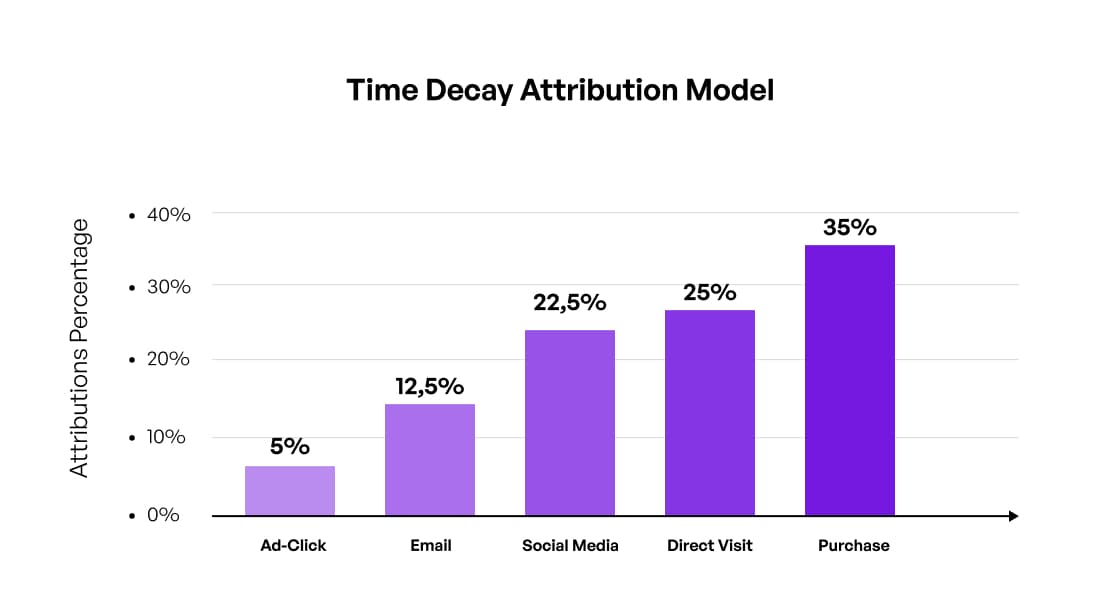
Time-decay attribution assigns more credit to the touchpoints closer to the conversion, with earlier interactions receiving less credit. It's ideal for businesses with longer sales cycles.
Position-Based (U-shaped) Attribution:
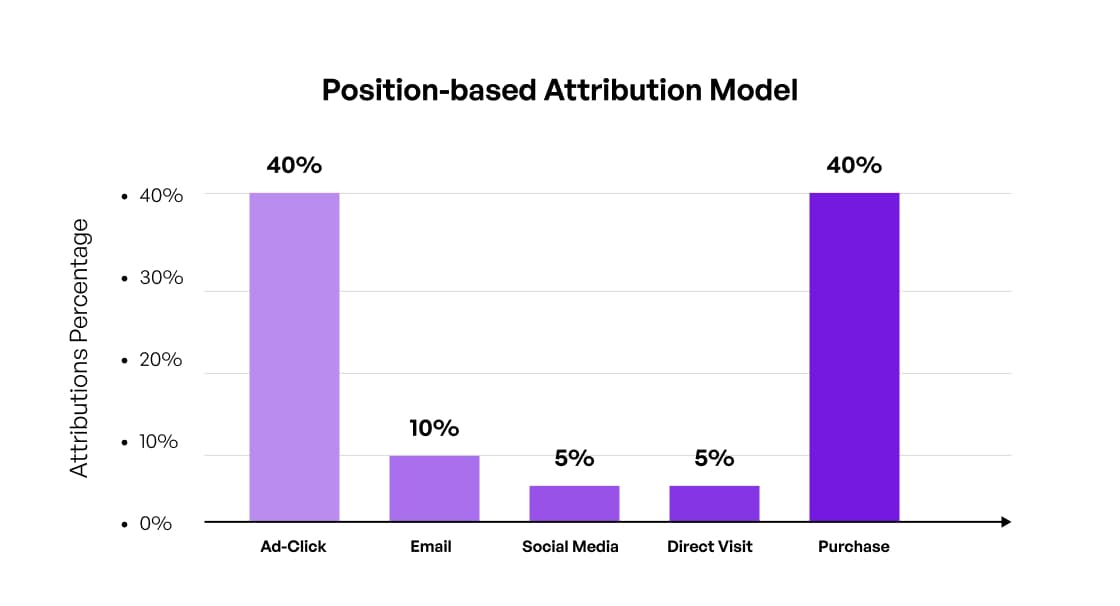
Position-based attribution gives significant credit (typically 40% each) to the first and last interactions, while distributing the remaining 20% across the middle touchpoints. This model is helpful for understanding both acquisition and conversion efforts.
You can choose the best of all the above strategies by leveraging an effective data analytics consulting service from a reputed company.
8 Ways Data Attribution For Retail Boost Sales
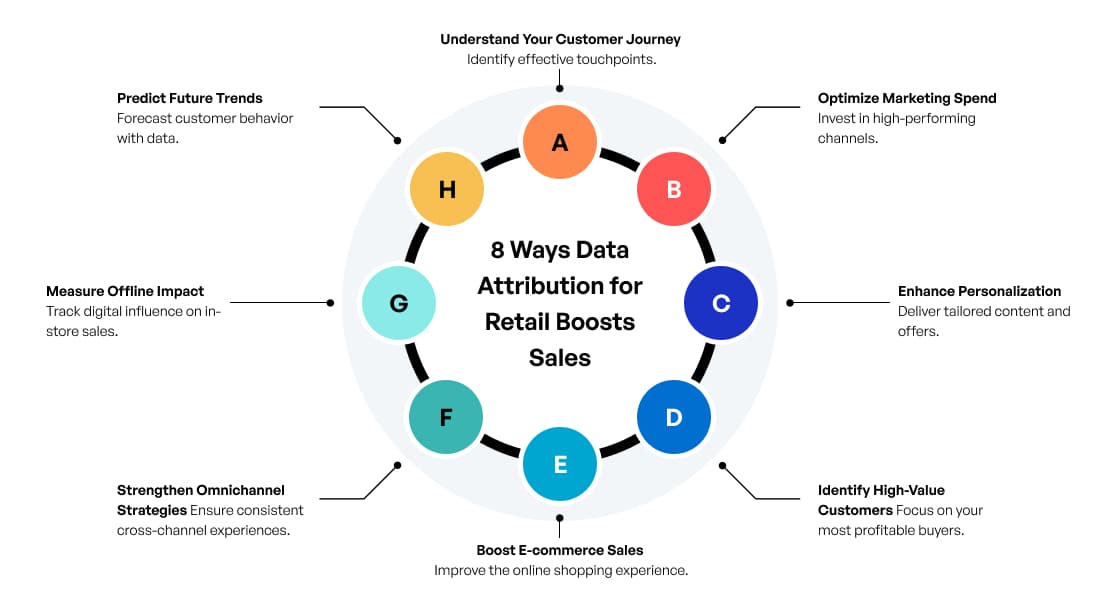
1. Understand Your Customer Journey
Data attribution helps in understanding the complete user journey and interactions across multiple channels from search engines to your website. With this brands can closely analyze the effective touchpoints, ultimately helping in optimizing the marketing strategies and efforts. Businesses can also use this information to enhance the user journey, by optimizing the graphics, page content, UI, and more.
2. Optimize Marketing Spend
Retailers often waste budgets on channels that don’t perform. Once brands analyze the most effective, highly converting marketing channels, they can call out any ineffective ads or marketing campaigns. This will help in saving huge financial resources, and the money can be used on more accurate, and high-performing marketing campaigns.
3. Enhance Personalization
Using data analytics for business, brands can closely analyze and track the converting user’s demographics, and psychographics. This will help them in providing fully personalized experiences, product recommendations, adjusted product pricing, and promotions to customers by considering their preferences and behaviour.
4. Identify High-Value Customers
Though marketing campaigns are usually run by keeping buyer persona in mind. Data attribution will help in identifying the most valuable segment of the audience. This can help optimize marketing efforts to match the needs of high-spending customers, propose personalized discounts/offers, and run campaigns.
5. Boost E-Commerce Sales
By optimizing marketing ways at every end for the customer, brands target the most effective touchpoints, potential high-spending customers, and refine their ROI. All this directly helps them provide hyper-personalized experience to customers, directly boosting their e-commerce sales.
6. Strengthen Omnichannel Strategies
Digital omnipresence is a must for e-commerce businesses in today’s date as modern customers would engage with the brand across all channels. Data analytics for retail helps you offer consistent and personalized experiences to users throughout. Businesses can optimize the product pricing on different channels based on the customer behaviour present on the particular channel.
7. Measure Offline Impact
By implementing advanced data attribution models, you can measure how digital campaigns are driving offline sales. This can help businesses boost offline sales by executing the appropriate in-store discounts, loyalty programs, etc. and bridge the gap between offline and online conversions.
8. Predict Future Trends
Retail businesses face different market fluctuations based on various trends, and seasons. With tough competition in the market, it’s important to stay ahead of these trends. Data attribution helps predict customer behavior, sales, and conversions for the upcoming season, making it easier to plan effective marketing strategies.
8. Predict Future Trends
Retail businesses face different market fluctuations based on various trends, and seasons. With tough competition in the market, it’s important to stay ahead of these trends. Data attribution helps predict customer behavior, sales, and conversions for the upcoming season, making it easier to plan effective marketing strategies.
Real-Life Success Stories: How Use Data Attribution Boosted Retail Sales
Nestlé saw a 35% rise in sales with social and influencer marketing attribution: It identified that audiences exposed to their DiGiorno and Hot Pockets campaigns spent 9.3% and 25.3% more, respectively, than those unexposed. This insight allowed Nestlé raise 35% using marketing attribution by simply optimizing their marketing strategies effectively.
(Source: StatSocial)
Best Buy's 'Renew Blue' Data Analytics Strategy: Facing intense competition from online retailers, Best Buy applied Palmatier’s data analytics and first principles approach in marketing. It launched the 'Renew Blue' initiative, which utilized data analytics to identify unprofitable segments and stores, leading to strategic closures. The company also implemented 'purchase online, pick-up in-store' programs to enhance customer engagement. This data-driven approach resulted in an increase of online sales from 7% to nearly 10% of total sales and achieved a $1 billion cost reduction.
IBM's 25% Cost Reduction through Marketing Attribution: IBM implemented advanced marketing attribution models to better understand the effectiveness of their marketing channels. This approach led to a 25% reduction in marketing costs by reallocating resources to the most impactful channels, thereby enhancing overall marketing efficiency.
(Source: Remote Marketers)
Hence, the sooner businesses pave the road to data and marketing analytics, the higher they can yield the real benefits of digital marketing. Data optimization can not only help you consider keen attention to details for your user, but also play around with their business-particular actions, which will help in fast and more conversions.

